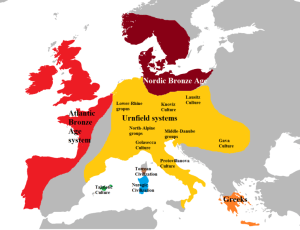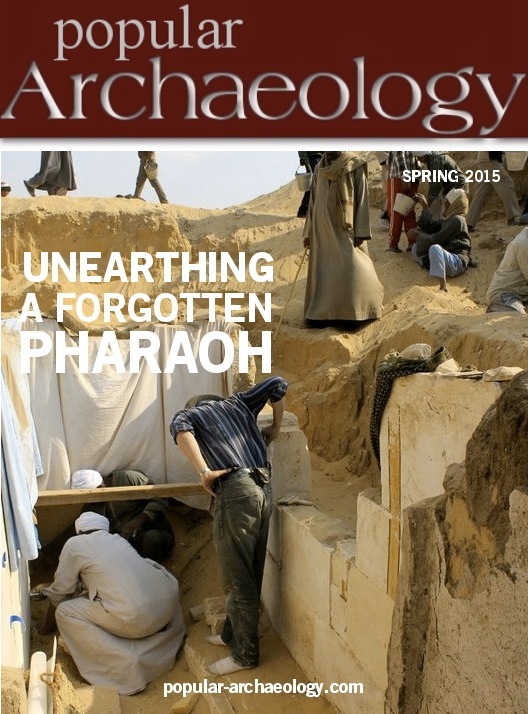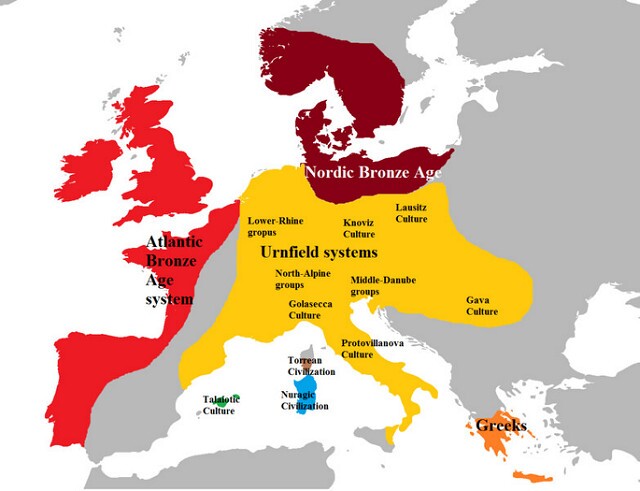
University of Leicester—Geneticists from the University of Leicester have discovered that most European men descend from just a handful of Bronze Age forefathers, due to a ‘population explosion’ several thousand years ago.
The project, which was funded by the Wellcome Trust, was led by Professor Mark Jobling from the University of Leicester’s Department of Genetics and the study is published in the prestigious journal Nature Communications.
The research team determined the DNA sequences of a large part of the Y chromosome, passed exclusively from fathers to sons, in 334 men from 17 European and Middle Eastern populations, using new methods for analysing DNA variation that provides a less biased picture of diversity, and also a better estimate of the timing of population events. This allowed the construction of a genealogical tree of European Y chromosomes that could be used to calculate the ages of branches. Three very young branches, whose shapes indicate recent expansions, account for the Y chromosomes of 64% of the men studied.
Professor Jobling said: “The population expansion falls within the Bronze Age, which involved changes in burial practices, the spread of horse-riding and developments in weaponry. Dominant males linked with these cultures could be responsible for the Y chromosome patterns we see today.”
In addition, past population sizes were estimated, and showed that a continuous swathe of populations from the Balkans to the British Isles underwent an explosion in male population size between 2,000 and 4,000 years ago.
This contrasts with previous results for the Y chromosome, and also with the picture presented by maternally-inherited mitochondrial DNA, which suggests much more ancient population growth.
____________________________________
Europe during the late bronze age (1100 BC). Xoil, Wikimedia Commons
_______________________________________________
Previous research has focused on the proportion of modern Europeans descending from Paleolithic—Old Stone Age—hunter-gatherer populations or more recent Neolithic farmers, reflecting a transition that began about 10,000 years ago.
Chiara Batini from the University of Leicester’s Department of Genetics, lead author of the study, added: “Given the cultural complexity of the Bronze Age, it’s difficult to link a particular event to the population growth that we infer. But Y-chromosome DNA sequences from skeletal remains are becoming available, and this will help us to understand what happened, and when.”
____________________________________
The study ‘Large-scale recent expansion of European patrilineages shown by population resequencing’ is published in Nature Communications.
Adapted and edited from the University of Leicester press release.
*The Wellcome Trust is a global charitable foundation dedicated to improving health. It provides more than £700 million a year to support scolarship in science, the humanities and the social sciences, as well as education, public engagement and the application of research to medicine.
The £18 billion investment portfolio provides the independence to support such transformative work as the sequencing and understanding of the human genome, research that established front-line drugs for malaria, and Wellcome Collection, the free venue for exploring medicine, life and art.
____________________________________________
 Did you like this? Read more articles like this with a premium subscription to Popular Archaeology Magazine.
Did you like this? Read more articles like this with a premium subscription to Popular Archaeology Magazine.
In addition, the latest Popular Archaeology ebook is now available.
______________________________________________
Travel and learn with Far Horizons.
____________________________________________
 Popular Archaeology’s annual Discovery Edition eBook is a selection of the best stories published in Popular Archaeology Magazine in past issues, with an emphasis on some of the most significant, groundbreaking, or fascinating discoveries in the fields of archaeology and paleoanthropology and related fields. At least some of the articles have been updated or revised specifically for the Discovery edition. We can confidently say that there is no other single issue of an archaeology-related magazine, paper print or online, that contains as much major feature article content as this one. The latest issue, volume 2, has just been released. Go to the Discovery edition page for more information.
Popular Archaeology’s annual Discovery Edition eBook is a selection of the best stories published in Popular Archaeology Magazine in past issues, with an emphasis on some of the most significant, groundbreaking, or fascinating discoveries in the fields of archaeology and paleoanthropology and related fields. At least some of the articles have been updated or revised specifically for the Discovery edition. We can confidently say that there is no other single issue of an archaeology-related magazine, paper print or online, that contains as much major feature article content as this one. The latest issue, volume 2, has just been released. Go to the Discovery edition page for more information.
____________________________________________







